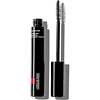What's inside
What's inside
 Key Ingredients
Key Ingredients

 Benefits
Benefits

 Concerns
Concerns

 Ingredients Side-by-side
Ingredients Side-by-side

Water
Skin ConditioningParaffin
PerfumingCopernicia Cerifera Cera
EmollientSteareth-20
CleansingCera Alba
EmollientAcacia Senegal Gum
MaskingAlcohol Denat.
AntimicrobialSteareth-2
EmulsifyingPotassium Cetyl Phosphate
EmulsifyingCetyl Alcohol
EmollientHydroxyethylcellulose
Emulsion StabilisingMadecassoside
AntioxidantSodium Polymethacrylate
Emulsion StabilisingSodium Dehydroacetate
PreservativeSodium Hyaluronate
HumectantSodium Chloride
MaskingSodium Bicarbonate
AbrasivePhenethyl Alcohol
MaskingPEG/PPG-17/18 Dimethicone
EmulsifyingArginine
MaskingPolysorbate 21
EmulsifyingPoloxamer 188
EmulsifyingPolyquaternium-10
Silica
AbrasiveSimethicone
EmollientPentylene Glycol
Skin ConditioningPanthenol
Skin Conditioning2-Oleamido-1,3-Octadecanediol
Skin ConditioningCaprylyl Glycol
EmollientDisodium EDTA
Methylsilanol/Silicate Crosspolymer
Skin ConditioningCitric Acid
BufferingPotassium Phosphate
BufferingPotassium Chloride
CI 77491
Cosmetic ColorantCI 77492
Cosmetic ColorantCI 77499
Cosmetic ColorantCI 75470
Cosmetic ColorantCI 77007
Cosmetic ColorantCI 77891
Cosmetic ColorantCI 77510
Cosmetic ColorantMica
Cosmetic ColorantWater, Paraffin, Copernicia Cerifera Cera, Steareth-20, Cera Alba, Acacia Senegal Gum, Alcohol Denat., Steareth-2, Potassium Cetyl Phosphate, Cetyl Alcohol, Hydroxyethylcellulose, Madecassoside, Sodium Polymethacrylate, Sodium Dehydroacetate, Sodium Hyaluronate, Sodium Chloride, Sodium Bicarbonate, Phenethyl Alcohol, PEG/PPG-17/18 Dimethicone, Arginine, Polysorbate 21, Poloxamer 188, Polyquaternium-10, Silica, Simethicone, Pentylene Glycol, Panthenol, 2-Oleamido-1,3-Octadecanediol, Caprylyl Glycol, Disodium EDTA, Methylsilanol/Silicate Crosspolymer, Citric Acid, Potassium Phosphate, Potassium Chloride, CI 77491, CI 77492, CI 77499, CI 75470, CI 77007, CI 77891, CI 77510, Mica
Water
Skin ConditioningBeeswax
Emulsion StabilisingButyrospermum Parkii Butter
Skin ConditioningPolyglyceryl-6 Distearate
EmulsifyingDimer Dilinoleyl Dimer Dilinoleate
EmollientGlycerin
HumectantCopernicia Cerifera Cera
EmollientPolyglyceryl-10 Myristate
Skin ConditioningCetyl Alcohol
EmollientGlyceryl Caprylate
EmollientLeuconostoc/Radish Root Ferment Filtrate
AntimicrobialZea Mays Starch
AbsorbentXanthan Gum
EmulsifyingArginine
MaskingPhenethyl Alcohol
MaskingBiotin
AntiseborrhoeicUrtica Dioica Extract
Astringent1,2-Hexanediol
Skin ConditioningCaprylyl Glycol
EmollientSodium Benzoate
MaskingCitric Acid
BufferingPotassium Sorbate
PreservativeBenzoic Acid
MaskingMyristoyl Pentapeptide-17
Skin ConditioningCI 77499
Cosmetic ColorantWater, Beeswax, Butyrospermum Parkii Butter, Polyglyceryl-6 Distearate, Dimer Dilinoleyl Dimer Dilinoleate, Glycerin, Copernicia Cerifera Cera, Polyglyceryl-10 Myristate, Cetyl Alcohol, Glyceryl Caprylate, Leuconostoc/Radish Root Ferment Filtrate, Zea Mays Starch, Xanthan Gum, Arginine, Phenethyl Alcohol, Biotin, Urtica Dioica Extract, 1,2-Hexanediol, Caprylyl Glycol, Sodium Benzoate, Citric Acid, Potassium Sorbate, Benzoic Acid, Myristoyl Pentapeptide-17, CI 77499
 Reviews
Reviews

Ingredients Explained
These ingredients are found in both products.
Ingredients higher up in an ingredient list are typically present in a larger amount.
Arginine is an amino acid that is important for human development. Your body uses is it to produce hair keratin and skin collagen.
As a cosmetic ingredient, Arginine has antioxidant properties and can also help repair damaged skin. This ingredient is derived either synthetically or from animals.
Arginine isn't fungal acne safe when used in the presence of other lipids (fats, fatty acids, oils, esters, etc). Oils and fats occur naturally within the skin, so take caution when using Arginine if you're prone to fungal acne.
Learn more about ArginineCaprylyl Glycol is a humectant and emollient, meaning it attracts and preserves moisture.
It is a common ingredient in many products, especially those designed to hydrate skin. The primary benefits are retaining moisture, skin softening, and promoting a healthy skin barrier.
Though Caprylyl Glycol is an alcohol derived from fatty acids, it is not the kind that can dry out skin.
This ingredient is also used as a preservative to extend the life of products. It has slight antimicrobial properties.
Learn more about Caprylyl GlycolCetyl Alcohol is a fatty alcohol. Fatty Alcohols are most often used as an emollient or to thicken a product.
Its main roles are:
Though it has "alcohol" in the name, it is not related to denatured alcohol or ethyl alcohol.
The FDA allows products labeled "alcohol-free" to have fatty alcohols.
Learn more about Cetyl AlcoholCi 77499 is also hydrated iron III oxide. It is created from mixing red and black iron oxides. This helps give shades of darkness to a product.
Iron III oxides are classified as inorganic chemicals for coloring.
Citric Acid is an alpha hydroxy acid (AHA) naturally found in citrus fruits like oranges, lemons, and limes.
Like other AHAs, citric acid can exfoliate skin by breaking down the bonds that hold dead skin cells together. This helps reveal smoother and brighter skin underneath.
However, this exfoliating effect only happens at high concentrations (20%) which can be hard to find in cosmetic products.
Due to this, citric acid is usually included in small amounts as a pH adjuster. This helps keep products slightly more acidic and compatible with skin's natural pH.
In skincare formulas, citric acid can:
While it can provide some skin benefits, research shows lactic acid and glycolic acid are generally more effective and less irritating exfoliants.
Most citric acid used in skincare today is made by fermenting sugars (usually from molasses). This synthetic version is identical to the natural citrus form but easier to stabilize and use in formulations.
Read more about some other popular AHA's here:
Learn more about Citric AcidThis ingredient comes from a palm tree native to Brazil. This ingredient is used to thicken texture and leaves behind a film when applied.
Phenethyl Alcohol is a colorless and aromatic alohol. It is naturally occuring in essential oils.
The scent of this ingredient is floral and often compared to rose.
Like other alcohols, this ingredient helps prevent the growth of bacteria. However, its main purpose is to impact a fragrance.
Learn more about Phenethyl AlcoholWater. It's the most common cosmetic ingredient of all. You'll usually see it at the top of ingredient lists, meaning that it makes up the largest part of the product.
So why is it so popular? Water most often acts as a solvent - this means that it helps dissolve other ingredients into the formulation.
You'll also recognize water as that liquid we all need to stay alive. If you see this, drink a glass of water. Stay hydrated!
Learn more about Water